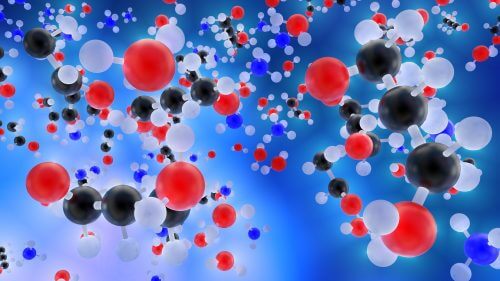Researchers at the Technion together with theorists from Canada and the Netherlands have developed an innovative method for predicting the behavior of a molecule that hits a surface. The method makes it possible to study basic reaction mechanisms that form the basis of important industrial processes such as the production of hydrogen and ammonia

By: Lotem Buchbinder
The meeting between two substances is the heart of chemistry, and its results depend on the chemical identity of the two substances and other variables, including the speed of the molecule and the angle of impact. Researchers at the Shulich Faculty of Chemistry at the Technion have developed an innovative method to control the rotational states of a molecule before it meets a surface made of another material, to characterize these states and to measure the behavior of the molecule after the impact.
Dr. Oded Godsi and research students Gefen Korem and Yossi Alkovi developed, under the guidance of Prof. Gil Alexandrovich, a general method for investigating the behavior of molecules that strike a surface. The research group focused on hydrogen molecules striking at the same speed, but in different rotational states, on very smooth copper surfaces and on copper surfaces with stepped surfaces. The researchers discovered that when the surface is stepped, the effect of the rotational state of the molecule on the reflection pattern from the surface is greater. The system developed and built at the Technion allows full control of the rotational states of the molecule using magnetic fields. This system contains a detector that allows the detection of the molecules returning from the surface and the measurement of their rotational orientation in space.
To provide theoretical backing for the method developed by Prof. Alexandrovitz's research group, his faculty colleague Prof. Zoper Maniv and research groups from Canada and the Netherlands came into the picture. These groups assisted in the analysis of the results and the development of the theory, with the aim of providing a theoretical model that links the rotational states of the molecule to the results of the impact.
The method developed is a significant advance in the study of dynamics of chemical reactions, and Prof. Alexandrovitz plans to expand its use to molecules such as methane and ammonia, which are widely used in industry, and to platinum and iron surfaces. Prof. Gil estimates that "the development of measurement capabilities and the subsequent development of new calculation methods will help the chemical industries in the future. Measurements of basic reaction mechanisms, and understanding the factors that influence the collision product of a molecule and a surface, are a necessary step in the development of computational models of chemical reactions. In the end, these models will allow control of the reaction results by choosing optimal surfaces, thereby increasing the efficiency of various chemical processes."
The research was funded by the European Union (ERC grants), the Israel-Germany Research Foundation and the Canadian Engineering and Science Research Council.
